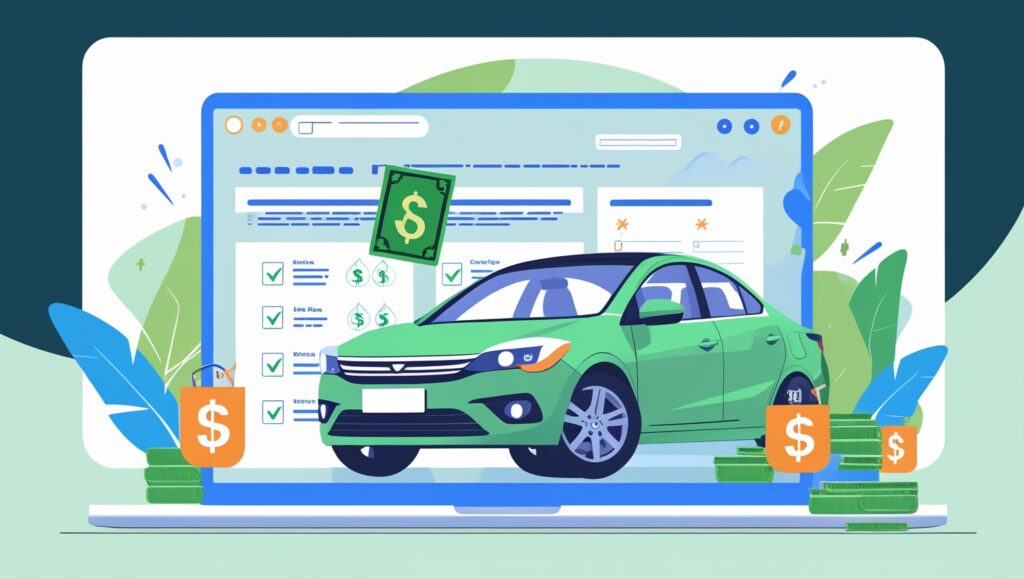Introduction: Car Insurance Demystified
Let’s cut through the confusion: car insurance is a financial safety net, but how it actually works can feel like a mystery. Whether you’re a new driver or just refreshing your knowledge for 2025, this guide breaks it down in plain English—no industry jargon, no fluff.
First, a quick reality check: 48 out of 50 U.S. states require drivers to carry car insurance (New Hampshire and Virginia are exceptions, but even they have strict financial responsibility rules). And while U.S. News & World Report calls it “non-negotiable,” most people don’t fully understand their policies. Let’s fix that.
By the end of this article, you’ll know:
- How premiums, deductibles, and claims work
- What coverage you actually need in 2025
- Smart hacks to save money (without skimping on protection)
- Emerging trends like AI-driven policies and usage-based insurance
The Basics: How Car Insurance Works (Think “Financial Airbag”)
Imagine car insurance as a safety net that catches you financially after accidents, theft, or disasters. Here’s the play-by-play:
- You Pay a Premium: This is your monthly or yearly fee to stay insured.
- An Accident Happens: Let’s say you rear-end someone (oops).
- File a Claim: Contact your insurer with details of the incident.
- Pay Your Deductible: The upfront amount you cover (e.g., $500) before insurance kicks in.
- Insurer Covers the Rest: Up to your policy’s limits.
Real-Life Example:
You crash into a lamppost, causing 2,000indamage.Ifyourdeductibleis2,000indamage.Ifyourdeductibleis500, you pay that amount, and your insurer covers the remaining $1,500.
Types of Coverage: What You Need in 2025
Not all policies are created equal. Here’s the 2025 cheat sheet:
1. Liability Insurance (The Legal Must-Have)
- Covers: Damage or injuries you cause to others.
- Why It’s Essential: Required in most states. Without it, you could face lawsuits or fines.
- 2025 Twist: Rising medical costs mean experts recommend $100,000+ per person for bodily injury coverage.
- Dive Deeper: What is Liability Insurance?
2. Collision & Comprehensive (Protect Your Car)
- Collision: Fixes your car after crashes (even if you’re at fault).
- Comprehensive: Covers theft, vandalism, storms, and animal strikes.
- 2025 Trend: Electric vehicles (EVs) cost 15–20% more to insure due to pricier repairs.
3. Uninsured/Underinsured Motorist Coverage
- Covers: Your bills if a driver with no (or minimal) insurance hits you.
- Stats to Know: 1 in 8 drivers are uninsured nationwide (Insurance Research Council).
4. Full Coverage (Not What You Think)
- Myth Buster: “Full coverage” isn’t a real policy—it’s shorthand for liability + collision + comprehensive.
- Who Needs It? Leased cars, new vehicles, or drivers in high-risk areas.
- Learn More: Full Coverage Explained
2025 Trends Shaping Car Insurance
The insurance world is evolving fast. Here’s what’s new:
1. AI-Powered Pricing
- How It Works: Algorithms analyze your driving habits, credit score, and even social media (!) to set rates.
- Pro Tip: Maintain a clean driving record—AI rewards safe drivers with lower premiums.
2. Usage-Based Insurance (UBI)
- What It Is: Pay-as-you-drive plans like Progressive’s Snapshot or Allstate’s Drivewise.
- Savings Potential: Low-mileage drivers save up to 30% (J.D. Power).
3. Digital Claims Processing
- Example: Submit photos of damage via an app instead of waiting for an adjuster.
How to Save Money in 2025 (Without Cutting Corners)
1. Bundle Policies
- How It Works: Combine auto + home/renters insurance for discounts (up to 25% off).
- 2025 Hack: Some insurers now bundle with pet insurance or cybersecurity plans.
2. Raise Your Deductible
- Trade-Off: Higher deductible = lower premium. Just ensure you can afford the out-of-pocket cost.
3. Leverage Discounts
- Top Discounts for 2025:
- Good Student: Teens with a B average or higher.
- Safe Driver: No accidents or tickets for 3+ years.
- EV Discounts: Rewards for eco-friendly drivers.
4. Shop Around Every 2 Years
- Why: Insurers hike rates for loyal customers. A 2024 study found switching saves $560/year on average.
- Compare Smartly: Best Plans for Families in 2025
Common Mistakes to Avoid
- Assuming Minimum Coverage Is Enough
- Risk: State minimums (e.g., 25kliability)won’tcoverseriousaccidents.Hospitalbillsforabrokenleg?That’s∗∗25kliability)won’tcoverseriousaccidents.Hospitalbillsforabrokenleg?That’s∗∗30k+**.
- Ignoring Policy Updates
- Example: Did you start working from home? Low-mileage discounts could apply.
- Skipping Gap Insurance for Leases/Loans
- Why: If your car is totaled, standard insurance pays its current value, not what you owe.
The Future of Car Insurance: What’s Next?
By 2030, expect:
- Autonomous Car Policies: Who’s liable when a self-driving car crashes?
- Climate-Driven Pricing: Rates may spike in disaster-prone areas (e.g., Florida hurricanes).
Final Takeaway: Knowledge = Savings
Car insurance isn’t just a legal checkbox—it’s a tool to protect your wallet. In 2025, staying informed is your best strategy. Review your policy, ask about new discounts, and don’t settle for stale rates.
Remember:
✔ Liability insurance is non-negotiable—but don’t stop there.
✔ Tech is your friend: Use apps and AI tools to snag better deals.
✔ Shop smart: Loyalty rarely pays in the insurance game.
Got questions? Drop them below—we’re here to help! 🚗💡



